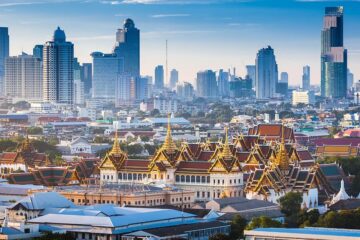In a bold strategic vision for Southeast Asia’s economic sovereignty, Deputy Investment, Trade and Industry Minister Liew Chin Tong urged ASEAN member states to reduce overreliance on foreign direct investment (FDI) and instead nurture indigenous technology multinationals capable of competing on the global stage.
Key Message & Vision
- From assembly lines to tech powerhouses
ASEAN’s traditional growth model has heavily leaned on FDI in manufacturing, with technology often imported rather than developed regionally. Liew argues this must change: “We must start envisaging an ASEAN future — with homegrown multinationals and technology-based ASEAN MNCs.” - Ambitious benchmarks
Over the next 10 to 15 years, Liew envisions ASEAN producing its own versions of global giants — a “mini-Huawei” or “mini-Samsung” — not necessarily mimicking the same products, but leading in what the next generation of tech innovation demands. - Bridging the gaps: connect capital, industry, policy
The region must overcome structural constraints—fragmented regulations, limited local venture capital, disjointed industrial policies—to enable scaling of regional champions. Liew emphasised the need to integrate funding, technology, industrial policy, and market scale into a cohesive ASEAN ecosystem. - APMC as a catalyst
The newly launched ASEAN Private Markets Council (APMC) is expected to unlock investment potential in critical future sectors such as green transition technologies, regional energy infrastructure, ageing-population solutions, and healthcare innovations.
Why This Matters for ASEAN
- Economic resilience in a multipolar world
In an era of regionalisation and shifting geopolitics, ASEAN needs its own tech champions to reduce dependency and maintain bargaining power. - Capturing value beyond production
Instead of primarily being the world’s factory, ASEAN can move up the value chain to design, develop and export technology-intensive products. - Unlocking internal markets & scaling pan‐ASEAN firms
With better connectivity, regulatory alignment, and capital flows, domestic firms can scale regionally and eventually globally. - Strategic sectors for the future
Investments in clean energy, advanced materials, AI, biotech, and digital health align with ASEAN’s long-term goals and global demand trends.
Quotes
“This is the time to start envisaging an ASEAN future — one with homegrown multinationals and technology-based ASEAN MNCs.”
— Liew Chin Tong, Deputy Minister, Investment, Trade and Industry
“If more investments go into ASEAN technologies, we will eventually see ASEAN companies emerging as regional or even global multinationals.”
— Liew Chin Tong (NST Online)
Strategic Implications & Recommended Actions
| Strategic Imperative | Recommended Focus Areas |
|---|---|
| Capital Ecosystem | Scale regional venture capital and private equity, incentivise long-term funds, build local fund management capacity |
| Industrial Policy Alignment | Develop coordinated ASEAN industrial strategy in tech sectors that complements national strategies |
| Regulatory & Standards Integration | Harmonise IP regimes, data frameworks, procurement rules, and cross-border trade standards |
| R&D & Innovation Hubs | Invest in semiconductor, AI, biotech R&D centres across ASEAN; promote cross-border collaboration |
| Market Scale & Access | Strengthen ASEAN internal market integration, facilitate scaling of startups across borders |
| Public-Private Coordination | Leverage APMC and ASEAN Business Advisory Council to convene and align stakeholders |


